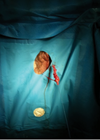Background
Pelviureteric junction obstruction (PUJO) is defined as a functionally significant impairment of urine flow from the renal pelvis into the proximal ureter. For more than a century, surgery was considered the first-choice approach to management. However, the widespread use of ultrasound screening has witnessed an increase in the diagnosis of antenatal hydronephrosis, many of which do well without treatment and resolve spontaneously. This has led to growing interest in conservative management of PUJO in infants. Furthermore, the promising initial trial results have led to a similar non-surgical approach in adults as well.
Hydronephrosis in children differs from that in adulthood and is not synonymous with obstruction, although PUJO is the most common cause of antenatal and neonatal hydronephrosis. PUJO, alternatively referred to as ureteropelvic junction (UPJ) obstruction, is characterised by functional impairment of urine flow from the renal pelvis into the proximal ureter [1]. The primary classification of the PUJO is based on its aetiology: congenital and acquired. In most cases, this is congenital and may be consequent to either ureteral hypoplasia, a high insertion of the ureter into the renal pelvis, entrapment of the ureter by a crossing accessory renal vessel, or a malrotated kidney [2]. Less commonly, acquired PUJO results from extrinsic compression such as retroperitoneal lymphadenopathy, fibrosis or tumour, urethral wall scarring / tumour, or iatrogenic [2].
Being the most common anatomical cause of antenatal hydronephrosis, the incidence of PUJO at birth is about 1:500 [3] whereas in adults the incidence is 1:1500 [4]. The clinical condition is twice as common in males than in females [5], the left side is affected more frequently, and 10% of cases are bilateral [5,6].
The symptoms of PUJO in adults include recurring flank pain, urinary tract infection, nausea, vomiting, renal colic, chronic back pain, abdominal mass, haematuria, or pyelonephritis. Poor growth may be a symptom of PUJO in infants [5]. However, it is not uncommon for PUJO to remain asymptomatic and remain undiagnosed and subsequently present as an incidental finding on radiologic imaging for an unrelated indication.
The variations in diagnostic methods have led to other conditions being mislabelled as PUJO and we know hydronephrosis can be physiological or pathological. Therefore, upper tract dilatation does not necessarily indicate clinically significant obstruction. Notably, the types and combinations of tests to classify the PUJO may differ from study to study, which makes combining the medical data in the literature challenging. Detection increased after the use of maternal ultrasound became widespread.
In addition to imaging, functional tests and biomarkers are currently used to diagnose PUJO. The most commonly used practical test is renography, in which a radioisotope MAG3 is injected intravenously and a scintillation camera used to track the flow of the isotope as it is filtered through the kidney and excreted down the ureter. Another minimally invasive diagnostic tool is the Whittaker test, a pressure / flow measurement that requires a percutaneous tract within a kidney. There is increasing interest in early urinary biomarkers for acute kidney injury, long-term kidney damage, and fibrosis, such as the kidney injury molecule 1 (KIM-1) [1].
The aim of treatment of PUJO is to resolve symptoms and maintain or improve renal drainage and function. The ‘gold standard’ approach to PUJO management has been laparoscopic pyeloplasty (with or without robotic assistance), with a success rate approaching 95% [5]. Despite the high success rate of the surgical treatment, the approach to PUJO management became a subject of debate because of the number of asymptomatic cases detected on antenatal screening. The conservative approach to management also has uncertainties with regards to selection age criteria, lack of consensus on when to intervene, appropriate follow-up interval and overall duration, and the choice of investigations for continued surveillance.
Although the data on this topic is scarce, this review aims to analyse the existing literature on the safety and effectiveness of the conservative management of PUJO.
Literature review
Children
In the 1980s the standard practice of routinely operating on infants with antenatally detected hydronephrosis was unquestioned. Madden et al. reported on their series of infants with PUJO managed conservatively, which was relatively new in 1991 [7]. Overall, 53 infants with PUJO were followed up for a minimum of 12 months. Demographic details regarding patients’ age and sex were not reported. Ten had bilateral PUJO, totalling 63 renal units. Subjects were divided into three groups based on their renal function on isotope renography: poor / non-function (<15%), impaired function (15-40%), and preserved function (40%). Out of 63 kidneys with PUJO, 24 underwent primary surgery at diagnosis and eight underwent ‘secondary’ surgery for deteriorating function or other indications. Thirty-one (49%) continued to be managed conservatively for a minimum of 12 months, with improving ultrasound appearances in 16 (52%) of these and stable renal function in all unilateral cases.
With the cohort study conducted in 2006 among 343 children (male/female: 260/83), Chertin et al. tried to understand which patients with PUJO will benefit from surgery and which from a conservative approach [8]. The study included subjects with antenatally diagnosed hydronephrosis that postnatally led to PUJO. Patients were divided into three groups based on renal uptake: normal – above 40% (n=235), moderate – 30-40% (n=68), and poor – below 30% (n=40). The subjects were followed up for 16 years. Of 343 participants, 179 (52.2%) underwent surgical treatment at a mean age of 10.6 months (range: one month – seven years). The degree of hydronephrosis was assessed using Society for Fetal Urology (SFU) classification. The univariate analysis demonstrated no significant relationship between patients’ sex (p<0.06), side of hydronephrosis (p<0.2), prenatal hydronephrosis SFU grade (p<0.6), and surgery. The authors concluded >50% of children with postnatal PUJO diagnosis who were antenatally diagnosed with hydronephrosis, required a surgical intervention while being treated conservatively. Predictive factors for the shift from conservative to surgical approach were postnatal hydronephrosis SFU grade 3-4 and renal uptake below 40%.
Adults
In a study on 83 adults Kinn et al. reported long-term outcomes of conservative or surgical management of PUJO over a 17-year period [9]. Forty-one patients underwent pyeloplasty and 36 were managed conservatively. The mean age was 36.2 years (range: 17-67) in the pyeloplasty and 39.1 (19-69) in the non-surgical group. The authors assessed the differential function of the hydronephrotic side versus total renal function as a percent of two-minute isotope uptake at renography in both groups (pyeloplasty group: 40.8%±10.2 vs. 47.1±14.2%; p<0.01; no-surgery group: 35.9±11.6 vs. 33.5±12.2, p>0.05). The authors concluded that in the absence of acute pyelonephritis and stone formation caused by PUJO the condition in adults may be fairly benign. Hydronephrosis seems a stable condition in adults in the absence of infectious complications, and whilst ipsilateral renal function improves after pyeloplasty, total renal function changes minimally. They suggest recurrent pain, infection, and concomitant stones as indications for surgical treatment of PUJO. However, the author also makes the valid point that there is insufficient data on the natural history of PUJO in adults.
In a rather small series, Gulur and associates examined the conservative management of PUJO [10]. Of 23 patients recruited, 15 had definite PUJO and eight had equivocal renograms. One had no further imaging due to associated comorbidities, so data from only 14 were analysed. Renograms were reviewed for relative renal function (RRF) and output efficiency (OE). Patients with >10% loss of RRF and / or <40% RRF of the affected kidney were offered pyeloplasty. An OE of >78% was deemed to indicate absence of obstruction, 70-78% as equivocal, and <70% as indicative of obstruction. At the mean follow-up of 47.7 months, the RRF of the affected kidney decreased from a mean of 48.6% to 46.7%, whereas the mean output efficiency improved from a mean of 60.7% to 63.7%. Overall, three patients underwent pyeloplasty due to a significant decrease in RRF and 11 remained stable. The authors concluded that conservative management of asymptomatic adults with PUJO appears to be safe in the short and medium term.
Malki and colleagues reported a series of 50 adults diagnosed with PUJO on dynamic renography and followed up for a mean 53 (range 9-168) months [11]. In this group, 19 patients were asymptomatic and 31 had minimal symptoms. During the follow-up period, 10 patients deteriorated and received surgical treatment (pyeloplasty in eight, nephrectomy in two). Of these 10 individuals, only two were initially asymptomatic. The authors found that patients with PUJO who deteriorate silently tend to do so relatively soon after diagnosis, i.e. within two years. A few patients will deteriorate much later and will require intervention, but those who did were all symptomatic. They conclude that patients who are asymptomatic or minimally symptomatic may be discharged after two years follow-up provided they are renographically stable.
Discussion
The history of the surgical approach to PUJO treatment started over a century ago, with the first reconstructive procedure for PUJO performed by Trendelenburg in 1886 [12]. The long-considered ‘gold standard’ Anderson and Hynes technique was introduced in 1949 [12]. Various modifications by Culp and de-Weerd, Scardino and Prince and others followed, up to the minimally invasive options of the present day which include endoscopic, laparoscopic and robotic approaches [13].
Children
Assessing the severity of this condition may be challenging among infants, but asymptomatic PUJO is not uncommon in this age group. When asymptomatic, a conservative approach appears to be safe. However, there is no consensus on the frequency of follow-up, the total duration of follow-up and the modality of assessment, and most clinical trials have not reported on this. In clinical practice an ultrasound every three to six months and annual renography seems to be usual.
Adults
Studies among adults demonstrate recurrent pain, infection, and concomitant stones as indications for surgical treatment of PUJO. Data shows that conservative management of asymptomatic adults with PUJO appears to be safe in the short and medium term. Particularly, renographically stable, asymptomatic or minimally symptomatic patients may be discharged after two years of follow-up.
There are also discrepancies in the way PUJO has been diagnosed in the published data, and there exists controversy regarding the best method to define obstruction. As a result, different clinical conditions diagnosed as PUJO may potentially skew data. An unanswered question is whether we can predict individuals who will deteriorate and therefore require surgery. Some studies suggest the anteroposterior diameter of renal pelvis may be predictive of this, but this remains controversial [14-16].
All studies discussed here have limitations, notably by the data being observational. This underlines the need for high-quality randomized controlled trials to enable better evidence-based recommendations for practice.
References
1. Rai A, Hsieh A, Smith A. Contemporary diagnosis and management of pelvi-ureteric junction obstruction. BJU Int 2022;130(3):285-90.
2. Hou A, Yiee JH. ‘Ureteropelvic junction obstruction.’ In: Godbole PP, Koyle MA, Wilcox DT (Eds.). Pediatric Urology: Surgical Complications and Management, 2nd Edition. Wiley-Blackwell; 2015.
3. Grayhack J, McVary K, Kozlowski J. Adult and Pediatric Urology, Volume 1. Lippincott Williams and Wilkins; 2001.
4. Khan F, Ahmed K, Lee N, et al. Management of ureteropelvic junction obstruction in adults. Nat Rev Urol 2014;11(11):629-38.
5. Michael Grasso I, Caruso RP, Phillips CK. UPJ obstruction in the adult population: are crossing vessels significant? Rev Urol 2001;3(1):42.
6. Baskin L. Congenital ureteropelvic junction obstruction. UpToDate 2022 Accessed
https://www.uptodate.com/contents/
congenital-ureteropelvic-junction-obstruction
[accessed 26 January 2023].
7. Madden NP, Thomas DFM, Gordon AC, et al. Antenatally detected pelviureteric junction obstruction. is non‐operation safe? Br J Urol 1991;68(3):305-10.
8. Chertin B, Pollack A, Koulikov D, et al. Conservative treatment of ureteropelvic junction obstruction in children with antenatal diagnosis of hydronephrosis: Lessons learned after 16 years of follow-up. Eur Urol 2006;49(4):734-9.
9. Kinn AC. Ureteropelvic junction obstruction: Long-term followup of adults with and without surgical treatment. J Urol 2000;164(3 Pt I):652-6.
10. Gulur DM, Young JG, Painter DJ, et al. How successful is the conservative management of pelvi-ureteric junction obstruction in adults? BJU Int 2009;103(10):1414-16.
11. Malki M, Linton KD, MacKinnon R, Hall J. Conservative management of pelvi-ureteric junction obstruction (PUJO): Is it appropriate and if so what duration of follow-up is needed? BJU Int 2012;110(3):446-8.
12. Poulakis V, Witzsch U, Schultheiss D, et al. [History of ureteropelvic junction obstruction repair (pyeloplasty). From Trendelenburg (1886) to the present]. Urologe A 2004;43(12):1544-59.
13. Esposito C, Masieri L, Blanc T, et al. Robot-assisted laparoscopic pyeloplasty (RALP) in children with complex pelvi-ureteric junction obstruction (PUJO): results of a multicenter European report. World J Urol 2021;39(5):1641-7.
14. Dhillon HK. Prenatally diagnosed hydronephrosis : the Great Ormond street experience : perinatal urology. Br J Urol Suppl 1998;81(2):39-44.
15. Damen-Elias HAM, De Jong TPVM, Stigter RH, et al. Congenital renal tract anomalies: outcome and follow-up of 402 cases detected antenatally between 1986 and 2001.Ultrasound Obstet Gynecol 2005;25(2):134-43.
16. Wellesley D, Howe DT. Prenatal diagnosis: does it alter outcome? Prenat Diagn 2001;21(11):1004-11.
Declaration of competing interests: None declared.








